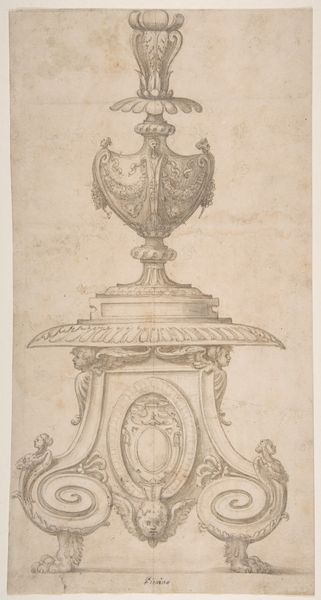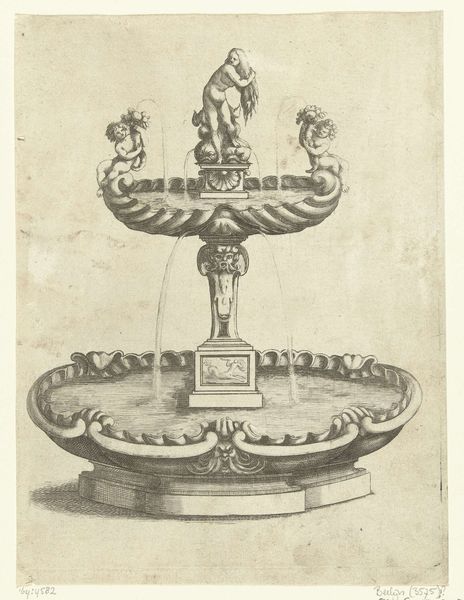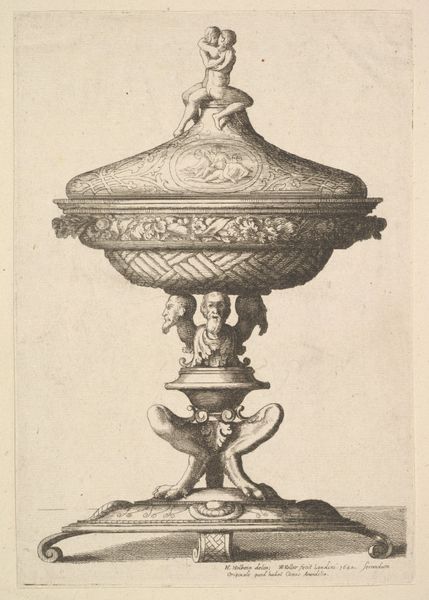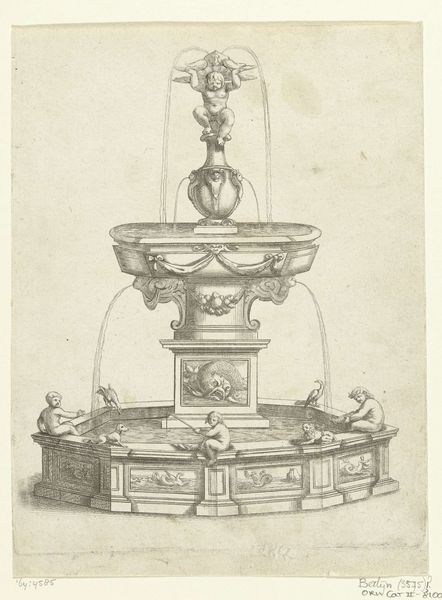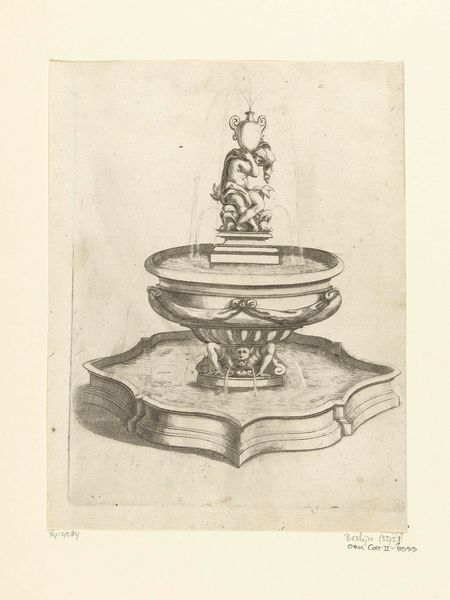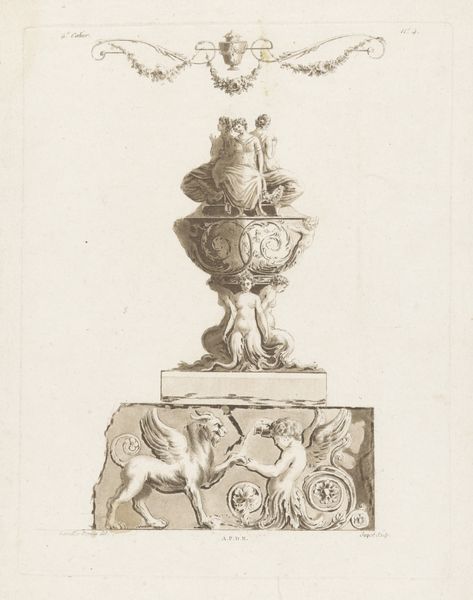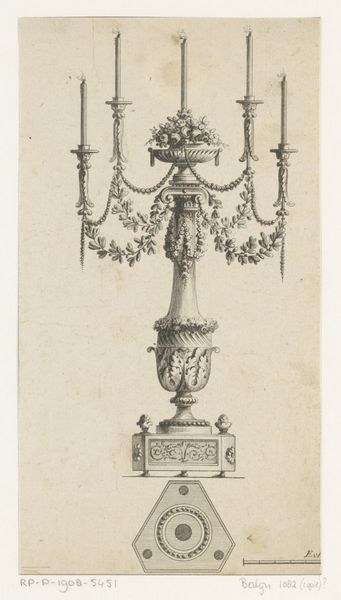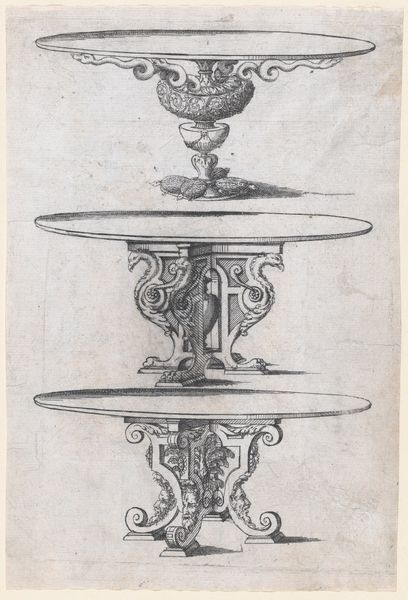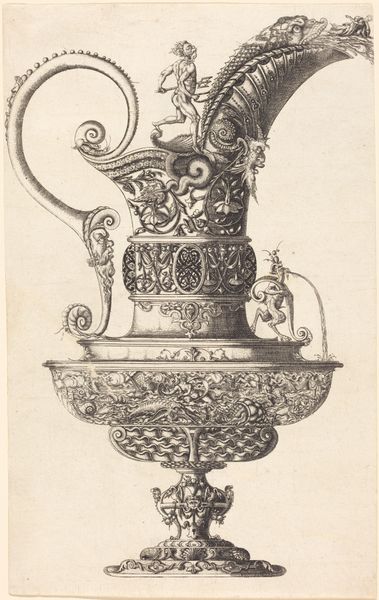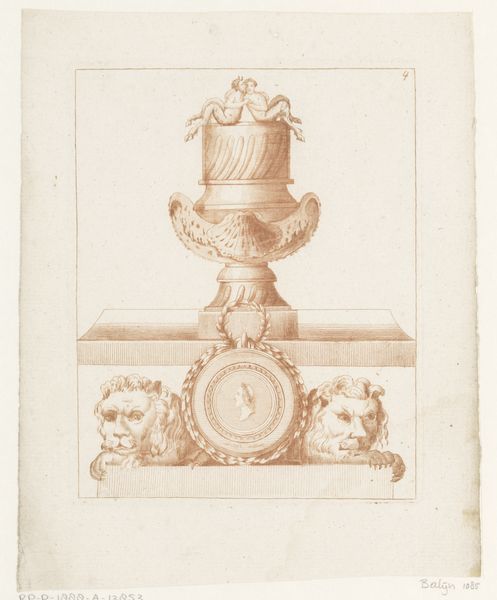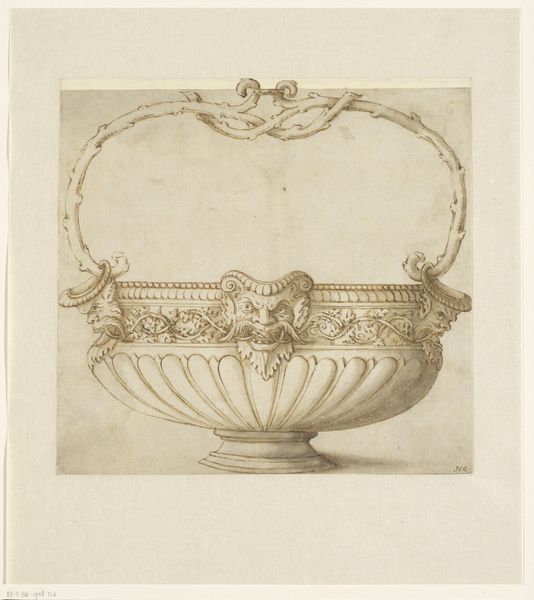
Design for a Fountain with Two Basins One on Top of the Other and Statues of Venus and Putti on the Top. 1608 - 1665
0:00
0:00
drawing, print, pencil, architecture
#
drawing
#
baroque
# print
#
pencil sketch
#
landscape
#
figuration
#
11_renaissance
#
pencil
#
cityscape
#
history-painting
#
architecture
Dimensions: sheet: 7 13/16 x 6 1/4 in. (19.9 x 15.8 cm)
Copyright: Public Domain
Curator: Here we have a sketch entitled "Design for a Fountain with Two Basins One on Top of the Other and Statues of Venus and Putti on the Top," attributed to Francesco Fanelli, dating from between 1608 and 1665. It's currently housed at the Metropolitan Museum of Art. Editor: Immediately striking! There’s such elegant precision in the lines; the tonal gradations articulate the volumes exquisitely, particularly around the basins. It’s an architectural fantasy rendered with the subtlest touch. Curator: Indeed. The very subject—a public fountain featuring Venus and putti—speaks to notions of civic pride, aesthetics, and classical ideals that underscored much Baroque artistic patronage. Consider the positioning of Venus at the very apex: she embodies beauty, fertility, perhaps even a carefully managed public sexuality via access to water. Editor: The way the fountain’s structure dictates the flow, it embodies a sort of controlled dynamism. Water emanates from the top level, then gathers below before spilling, delineating movement with sculptural containment. Almost a study of water as a designed phenomenon. Curator: And note the interplay between public utility and overt sensuality! Fountains, historically, served a very real purpose. But here, Fanelli melds utility with idealized human forms to convey the importance of the Medicis' beneficent rule over the masses—they control the symbolic as much as the source of resources. It really encapsulates the Baroque ethos of simultaneously conveying religious power and sensual humanism. Editor: Looking again, there’s a fascinating tension created by the two basins, their shape reflecting the interplay of concave and convex curves—essentially structuring the dynamics within the sculptural whole. It emphasizes an artificial structure placed onto nature. Curator: Exactly. Even this piece reflects the culture's power dynamics during that period, shaping how we engage with notions of femininity, public resources, and what it meant to perform as a leader within that timeframe. What initially appeared as design on paper suddenly contains and communicates to us the cultural priorities embedded in urban design. Editor: I concur. On a technical note, the limited tonal range, and precise pencil strokes really give it a distinctive elegance. I find it particularly beautiful as an exercise in restrained virtuosity. Curator: It allows for an insight into a set of core issues within both Baroque art and Renaissance civic ideals and I value this unique merging of concept and history that helps us grasp a culture and it’s ruling ideology better. Editor: A beautifully constrained creation revealing larger social and political underpinnings. Fascinating.
Comments
No comments
Be the first to comment and join the conversation on the ultimate creative platform.
